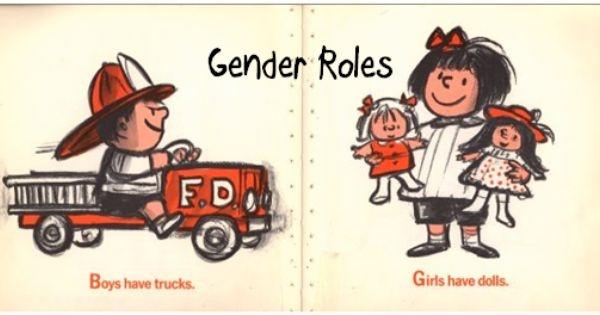Gender stereotypes – how they enable social evils

Stereotypes are assumptions and generalizations that are made about the characteristics, behavior, role etc about the members of a group based upon certain pre-established notions about the group.
Stereotypes can be positive as well as negative. Specifically focusing on the negative aspects stereotyping, one of the most common stereotypes is about the gender. The problem in gender stereotypes is that the socialization of the children gets internalized by the children as early as 8 to 12 years.
Once the gender stereotype is internalized it becomes self perpetuating that means child start behaving according to the established stereotypes by themselves.
The common stereotypes based on gender that we come across would be that boys should be strong, assertive, aggressive, competitive, independent, needs to be outdoors, play outdoor sports, not express their softer emotions etc. Girls expected to be soft, nice, nurturing, caring, compassionate, beautiful, sexy, take care of the house hold, be artistic etc.
The gender stereotype also identifies the role played by the boy or the girl in the society as well as in the family. Boys are expected to earn and provide for the family and the woman are expected to stay home, perform house hold chores and take care of the children.
You will find these in comments like
“Boys don’t cry”
“Don’t behave like a girl”
“Boys are good at math and science”
“Men need to take charge and be the head of the house”
“Act like a lady”
“Girls are good at arts and crafts”
“Women need to be submissive and do what they are told to do”
“Women need to look pretty”
“Women cant handle finances”
A man is supposed to provide protection and the woman is supposed to be meek and seek the protection provided by the man. A man is supposed to be career oriented and the woman is supposed to be family oriented. If you look at it, it makes the woman dependent on the man and not majorly other way around. Instead of instilling inter dependency, it makes dependency the norm.
It is not just parents who enable this type of gender stereotyping but there are a whole bunch of participants in this process, be it the neighbors, the school, the teachers, friends, religion, community leaders, media, advertising, movies and so on.
Stereotyping establishes the discrimination between genders and it makes a child believe less in themselves and their capabilities, and sets a fixed set of expectations on them. This can impact their creativity, exploration, hold incorrect images about themselves, lowering the child’s self-esteem.
Media – be it movies, advertising etc, for eg, many a times show case girls playing with toys and boys with cars. In adults, women are objectified as sexual objects and men as macho and tough or the message is sexist. The woman is at the kitchen sink or washing clothes. And if a man is shown doing the house hold chores, it is deemed an admirable quality or it is ridiculed.
Even if some one is not adhering to these stereotypes, the society – be it family, friends, neighbors, community – shun them, ridicule them, forcing them to conform to their pre-defined stereotypes.
How stereotypes allow social evils to continue:
With these gender stereotypes in place, the women or the girl child is considered a burden in the family. The woman is not expected to contribute financially in the family. And even if she does, she needs to also perform all her gender based duties in the house hold (so called traditional responsibilities of the woman in the house – like cooking, cleaning etc).
Social evils like Dowry are still followed in the society and are also justified by people who engage in them, based on these stereotypes. Girl child, hence being considered a burden, leads people to commit female infanticide and female foeticide.
This fosters an environment of gender based discrimination, in the society, whether it is at home or at work place.
How stereotypes stop someone from asking for help:
When domestic violence happens from a man towards a woman, the male dominance stereotype is predominant. And the woman follows the meek submissive one.
When domestic violence happens from a woman to a man, the man doesn’t seek help or doesn’t talk about it since he considers it beneath a man to admit that he is being harassed by a woman. Or even when he asks for help, he gets ridiculed by the society.
How to address these harmful gender stereotypes:
Though some of these social norms are changing, we have a long way to go.
Governments make laws and regulations, Courts make judgments and provide guidelines, police work on the law enforcement. But despite all these, the change needs to start from the grass roots. Change needs to start from our own house holds in our families; change needs to start from within ourselves, in our own mindsets.
